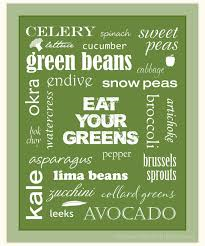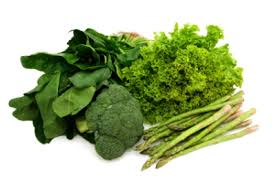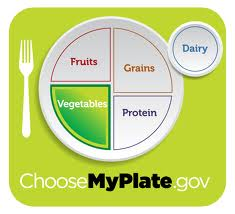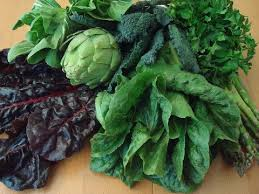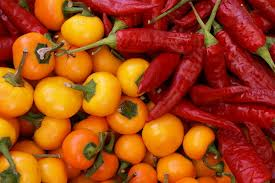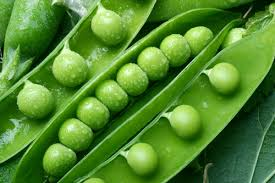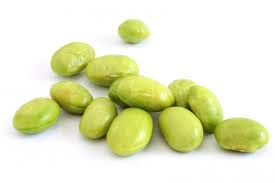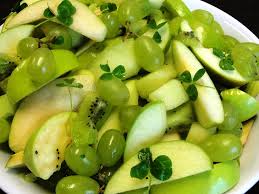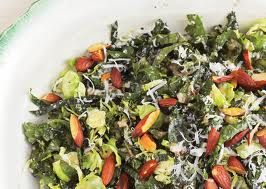We would all love to say we are great about including greens in our diet. However, according to Healthy People 2010, a report established every ten years by the Center for Disease Control and Prevention (CDC), only 27 percent of adults eat their daily requirements of vegetables (CDC, 2009). Thankfully, Brooke P. is here to offer some excellent suggestions of how we can sneak more greens into our diet.
Source: http://www.cdc.gov/media/pressrel/2009/r090929.htm
Seeing “Green”
Whether it’s celebrating St. Patrick’s Day or wishing for fresh grass and the arrival of Spring, the color green feels fresh and invigorating. Adding some “green” to your diet can do more than appease your mom, too! It can pack a potent nutrition punch that will leave you energetic and ready to take on the outdoors.
The list of green vegetables and fruits is long, and each can vary in the variety and amounts of nutrients and antioxidants they contain. In general, fruits and vegetables are high in vitamins A, C, E, K, B-vitamins (like folate), potassium and fiber. Antioxidants are concentrated in the skins of fruits and vegetables, so eating the peel (whenever possible) means you get all the nutrients and antioxidants with an added dose of dietary fiber. Green, leafy vegetables, in particular, (the greener, the better!) are also good sources of minerals like calcium and iron — important for bone health and delivering oxygen to cells, respectively. Cooking dark greens like spinach allows the calcium to be better absorbed, and eating iron-rich greens with a source of vitamin C (like citrus fruits, berries and bell peppers) increases iron absorption. For more information on the nutrients and benefits of fruits and vegetables, visit choosemyplate.gov.
The US Department of Agriculture’s MyPlate recommends that the average person on a 2000 calorie diet consume the following amounts of vegetables each week. It also recommends about 2 cups of fruit each day. (Note that while fruits and vegetables have some of the same antioxidants and nutrients, it’s important to get a variety of both!) I’ve highlighted some that are “green” in each of the categories.
1.5 cups of Dark Green Vegetables: arugula, bok choy, broccoli, collard greens, dark green leafy lettuce, kale, mesclun, mustard greens, romaine lettuce, spinach, Swiss chard, turnip greens, watercress
5.5 cups of Red and Orange Vegetables: No green here, but these are good sources of antioxidants known as carotenoids, as well as Vitamins A & C.
1.5 cups of Beans and Peas: green lentils, split peas
5 cups of Starchy Vegetables: green bananas (really a fruit, but unripe bananas contain ‘resistant’ starch which acts like an insoluble fiber), green peas, green lima beans
4 cups of ‘other’ Vegetables: artichokes, asparagus, avocado, Brussels sprouts,
cabbage, cauliflower, celery, cucumbers, green beans, green peppers, zucchini
Green Fruits: green grapes, kiwi, honeydew, green apples & pears
So, whatever flavor of “green” you prefer, try to eat at least a 1/2 – 1 cup of green vegetables most days of the week. Fill in the rest with a rainbow of other colors, and you will be sure to meet your nutrient needs, as well as help protect your body from chronic diseases like heart disease, diabetes and cancer.
Here are a few of my favorite recipes to get you started! What’s your favorite green vegetable? Tell us at: #myfavoritegreenvegetable
Quinoa is higher in protein than traditional risotto, so this makes a quick and easy dinner or leftover lunch. Some fresh fruit rounds out the meal!
Skinnychef.com/ October 2009
By: Jennifer Iserloh
Ingredients
- 1 10ounce package prewashed, chopped kale or spinach
- 1 tablespoons olive oil
- 4 cloves garlic, minced
- 1/2 teaspoon red chili flakes
- 1 cup quinoa, rinsed under cold water
- 1 cup dry white wine (can substitute chicken or vegetable broth)
- 4 cups lowsodium, fat free chicken broth or vegetable broth
- 1 4ounce package fresh goat cheese, room temperature (I find 2 oz. is just right.)
- 4 tablespoons grated Romano or Parmesan cheese
- 1 lemon, zested and juiced
- 1/2 teaspoon freshly grated nutmeg
- 1/4 teaspoon salt
Instructions
- Microwave the kale or spinach in the bag or in a microwave-safe bowl on high 12 minutes or until it wilts. Set aside.
- Warm the oil in a large skillet over medium high heat. Add the oil, garlic, and red chili flakes.
- Cook 2 to 3 minutes until the garlic becomes fragrant but does not brown. If the garlic begins to brown, reduce the heat to low.
- Add the quinoa and cook another minute, stirring once or twice until the garlic in mixed in.
- Add the broth or wine and bring to a boil. Cook another minute until most of the liquid is evaporated.
- Add the broth, and bring to a slow simmer.
- Cook 10 to 12 minutes until more than half of the liquid is absorbed.
- Roughly chop the spinach, if using. Stir spinach or kale in along with the goat cheese, lemon zest, lemon juice, the nutmeg, and salt.
- Sprinkle with grated cheese and serve immediately.
Nutrition Per Serving (2 cups): 418 calories. 20 g protein, 43 g
carbohydrates, 14 g fat (6 g saturated), 17 mg cholesterol, 8 g fiber, 468 mg
sodium.
As someone who is, admittedly, not a Brussel sprout lover, these cruciferous vegetables take on a new role and flavor sliced raw in this salad. I also like to short-cut this recipe by using chopped, bagged kale and already toasted, sliced or slivered almonds from the grocery.
Bon Appétit | November 2011
by Susan Spungen
Yield: Makes 8 to 10 servings (This make a large salad, but it holds up well in the refrigerator.)
Ingredients
- 1/4 cup fresh lemon juice
- 2 tablespoons Dijon mustard
- 1 tablespoon minced shallot (can substitute onion)
- 1 small garlic clove, finely grated
- 1/4 teaspoon kosher salt plus more for seasoning
- Freshly ground black pepper
- 2 large bunches of Tuscan kale (about 1 1/2 pounds total), center stem discarded, leaves thinly sliced
- 12 ounces brussel sprouts, trimmed, finely grated or shredded with a knife
- 1/2 cup extra-virgin olive oil, divided
- 1/3 cup almonds with skins, coarsely chopped
- 1 cup finely grated Pecorino
Preparation
- Combine lemon juice, Dijon mustard, shallot, garlic, 1/4 teaspoon salt, and a pinch of pepper in a small bowl.
- Stir to blend; set aside to let flavors meld. Mix thinly sliced kale and shredded brussels sprouts in a large bowl.
- Measure 1/2 cup oil into a cup.
- Spoon 1 tablespoon oil from cup into a small skillet; heat oil over medium-high heat. Add almonds to skillet and stir frequently until golden brown in spots, about 2 minutes. Transfer nuts to a paper towel–lined plate. Sprinkle almonds lightly with salt. (Note: you can skip this step and used toasted almonds to save time!)
- Slowly whisk remaining olive oil in cup into lemon-juice mixture. Season dressing to taste with salt and pepper.
- Add dressing and cheese to kale mixture; toss to coat. Season lightly with salt and pepper. Garnish with almonds.
DO AHEAD: Dressing, kale mixture, and toasted almonds can be prepared 8 hours ahead. Cover dressing and kale mixture separately and chill. Cover almonds and let stand at room temperature.
References:
- Skinnychef.com, accessed on March 12, 2014.
- Epicurious.com©, accessed on March 12, 2014.
- Choosemyplate.gov. US Department of Agriculture, accessed on March 12, 2014.

